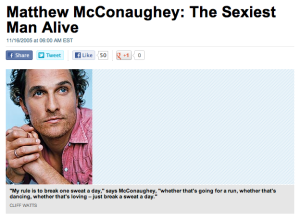An entire workout can be centered around the kettlebell swing.
There are very few exercises other exercises I would feel comfortable saying that about. But the kettlebell swing is definitely a movement that be an all-in-one solution. One stop shopping if you will.
Based on the popularity of my previous post, It’s Just a Kettlebell Swing Workout, I decided to go ahead and continue posting samplings of other kettlebell swing based workouts.
But I must be clear about one thing: I am in no way endorsing that the kettlebell swing be the only exercise that you leverage in your movement training programs.
While the kettlebell swing is certainly a world-class movement, it is important to develop strength and power through other exercises as well. Remember, the human body pushes, pulls, jumps, twists, carries, etc.
Humans have to be able to execute a wide range physical tasks if you stop and think about it. Especially when you consider that you never really know what the demands of the workday or weekend are going to bring.
It really pays to be physically prepared.
Workouts are scheduled bouts of physical exertion. You know exactly what is going to happen during a workout and how it is going to happen. So much of our daily lives are unscheduled, random and out of our control. The workout is one aspect of our lives that we can control. We control the amount of effort, intensity, exercise selection and duration of the workout. We have complete control of what happens during this brief period of time.
It’s a real turn on for some people who feel like they have little control over anything else in their schedule.
Anyways, back to the point of this blog post.
Kettlebell swings, and how we can organize and rearrange kettlebell swings into highly effective training sessions.
When I sense boredom creeping up on my training habits (as many of you have also experienced) I know that it is time to shuffle a few things around. I value the impact that 2-handed kettlebell swings- especially heavier swings for longer duration work sets- can have on maintaining my body composition, but I also know that too much of anything can be a bad thing.
Boredom is part of being human, so it’s important to inject energy into your training sessions.
In this case, single arm swings added an element to my training session that reinvigorated the entire session.
Here is what the workout looked like.
If you get serious about adopting kettlebell swings into your workouts, you’re quickly find that your body will enter a different realm of lean. I have to admit that I thought kettlebells were gimmicky in the beginning, but after submerging myself into kettlebells exclusively one Summer, I prove my own opinions incorrect.
I got really lean, really quick. From just swinging the damn thing between my legs, back and forth like a pendulum. The concept seemed too good to be true initially.
Interestingly enough, I didn’t have the greatest technique at the time, but I had established a great foundation of all around strength, stability and resilience to fatigue which allowed me to continue advancing my workouts.
This is an important point. I would strongly advise that anyone reading this post go and seek out a professional who has the credentials of a high level swinger. RKC (Russian Kettlebell Challenge) or StrongFirst certified individuals would be a great place to start. Most of these folks were trained under Pavel Psatsouline, who is the godfather of kettlebells in the Western World. You would get fantastic tips, tricks and technique adjustment from these individuals.
But, if you have a willingness to learn and a decent bodily awareness, I also personally believe that you can teach yourself how to swing at home. Set up a smart phone and shoot short clips of yourself swinging. Compare it to other videos like the following:
Neghar has great technique… check out her blog…
Pay attention to the difference in your technique and Neghar’s swing technique. Critique yourself bit by bit. Make the small adjustments. Most people will notice that they are “lifting” the bell versus swinging it, or squatting versus hinging the hips.
We have the ability to teach ourselves things- not just mental education but physical education also- which I sometimes think that we forget. We can be self-sustaining.
If you find that you have little time, and want a workout that is bare bones simple, try this little diddy…
 Recently, I jumped into this exact workout prior to my evening plans. I didn’t have much time to train but needed to get some amount of work done to feel good about myself, so this 10 minute workout fit the bill. Using a 28kg KB, I recorded 215 swings. Not a world record but also not too bad in my mind.
Recently, I jumped into this exact workout prior to my evening plans. I didn’t have much time to train but needed to get some amount of work done to feel good about myself, so this 10 minute workout fit the bill. Using a 28kg KB, I recorded 215 swings. Not a world record but also not too bad in my mind.
Kettlebell swings are a highly productive exercise. Add them to your training, and with an ounce of consistency I know that you’ll see some significant return on your investment. Just do it.
Cheers to swing workouts!
KG






















